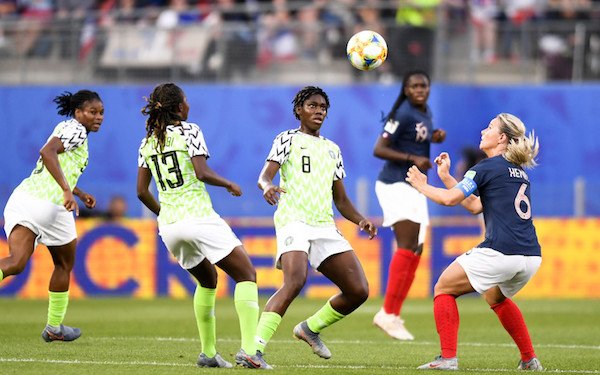In four days’ time, when the Ferns, the New Zealand Female football team, march to the field to take on Norway in the 2023 Women’s Football World Cup opening game, they will be marching into history.
The atmosphere would be electric, and every seat in the 50,000-capacity Eden Park in South Auckland, New Zealand’s largest city, will be occupied. The streets that evening will be filled with fans and tourists, all excited about the game of football, and they will be there to cheer their countries to victory.
Disappointment would come as the tournament progresses, from lost matches, tears from a missed penalty, and the burden of an early exit later. Still, on the Kick-off day, the players and fans will participate in the world’s most popular game, and women will be the conductors.
But it has not always been like that.
It all began in Japan
Since its inception, women’s football has struggled to receive the recognition, appreciation, and professional status that it deserves.
When the world football governing body, FIFA, rued the idea of a female global football tournament, they were opposition to the idea.
Some people believed that women’s football was not as entertaining as men’s games and that there was not enough interest in it to warrant a World Cup. Others argued that the women’s game wasn’t developed enough for a World Cup and would be unfair to the women’s teams.
Even Sepp Blatter, a former FIFA president, had muttered the idea that women’s game was “not good enough” for the world cup.
The opposition to a women’s game goes way back. With a claim to the origin of the game, the English Football Association or FA banned women from playing football In 1921. The FA claimed that the sport was “unsuitable for women” and that it went against social norms at the time. This ban lasted for over 50 years, and it relegated women’s football to small-scale competitions and unofficial matches.
The FA’s ban on women’s football was based on a number of outdated and sexist beliefs. The FA claimed that football was too physically demanding for women and that it would damage their health. They also claimed that football would make women less feminine and attractive.
So when the mostly semi-professional footballers from the 12 countries showed up for the 1991 FIFA Women’s World Cup, they gave their hearts, hoping to prove a point that they have a right to play a game they love.
So they entertained the over 500,000 thousand spectators who showed up at the four venues in Guangdong, China.
Nigeria, Africa’s only representative at the tournament, had a squad with an average age of 18 years and Chinese Taipei, another team at the Mundial, showed up with no professional footballer on its roster.
FIFA’s investment
Since the first tournament in China, FIFA has invested hugely in the promotion and improvement of the women’s game, and this year’s tournament-the media attention, the anticipation and even the quality of play expected- is a result of that investment.
FIFA has slowly but steadily increased its financial commitment to the women’s game. It budgeted $24 million for the women’s game from 2014 to 2018; t$14 million for the development of the female game in 2020. This year alone, FIFA budgeted $395 million for the FIFA Women’s World Cup and has kept aside $17 million to develop the women’s game.
In collaboration with various football associations, FIFA has also invested in female officials. At the first Female World Cup, only 6 of the 20 Referees and Assistant Referees were women, but after a consistent, deliberate opening of the game, women have now staked their place in the centre of Football matches, with more than 80% of match officials expected at this year’s showpiece women.
Female referees have also taken a stake in the men’s game, Stephanie Frappart of France, last year, became the first woman to referee a men’s World Cup game in the match between Costa Rica and Germany.
It is arguably the popularity of the women’s game that led to FIFA’s announcement of an increase in the world cup’s prize money pool to a record $110 million, which is up from $30 million for the last tournament in France.
“As a father of four beautiful daughters, I know how much attention we need to give women. Women deserve much, much more than that, and we are there to fight for them and with them,” Gianni Infantino, the FIFA President, said.
Fight for equal pay
Despite the seeming progress, female footballers around the world continue to feel underpaid when compared with their male counterparts.
According to reports by the Guardian, women footballers in England, on average, earn less than 5% of what their male counterparts earn. It is even worse for some national teams.
In 2019, the US female national team began a battle for equal pay. Although more successful on the field than their male counterparts, the women were getting less than the men and felt that their pay was unfair.
They won the battle for equal pay last year when they signed bargaining agreements for equal pay with U.S. Soccer, the country’s football governing body.
Taking inspiration from the US, the global professional football players’ union, in a letter signed by 150 women’s national team players, asked FIFA to pay equal World Cup prize money. FIFA is yet to do that.
More opportunities
According to FIFA, there are 29 million female footballers globally, and it aims to increase that number to 60 million by 2026; and it said it is ready to spend about $1 billion on the development of the women’s game.
An investment like this can lead to enhanced professional development opportunities for female players. Increased funding can support training programs, coaching staff, and specialised facilities, allowing players to improve their skills, tactical understanding, and overall performance. This can contribute to a higher standard of play and competitiveness in women’s football.
Football is a job, and for many young girls and women, the increased Greater investment in the game means they can provide for themselves and their families.
The $ 30 thousand dollars for each participating player is a good start, and such payments, will help most of them sustain themselves as professional athletes. This financial support can alleviate financial pressures and enable players to focus on their careers, ultimately attracting more talent to the sport.
Also, the popularity of the female game is affording women’s footballers the opportunity to leverage their star power and become ambassadors for brands. Like the case of Nigeria and Barcelona Femeni striker Asisat Oshoala, who was recently unveiled as a brand ambassador by cable television company, Muti-choice.
The positive result of the women’s game has also shown up in the number of women taking up roles as coaches. In the first tournament in China, Sweden was the only team with a female coach; there would be 13 female coaches at the year’s tournament.
In four days, the New Zealand women's football team will make history in the opening game against Norway at the 2023 Women’s World Cup. This event marks a significant milestone, celebrating women's involvement in football, which has faced historical challenges including inadequate recognition and opposition from entities like the English Football Association and former FIFA officials.
Since the inaugural Women's World Cup in 1991, FIFA has significantly invested in promoting and developing women's football, budgeting millions of dollars to enhance the sport. This investment has led to increased media attention, improved quality of play, and more opportunities for female officials and players.
Despite the progress, female footballers still face pay disparities compared to their male counterparts. Efforts for equal pay have seen successes, notably with the US women's national team's 2019 battle for fair compensation, inspiring global calls for equitable pay in the sport. FIFA continues to aim for further improvements, planning substantial investments to double the number of female footballers by 2026 and providing better support for professional development and financial sustainability.






